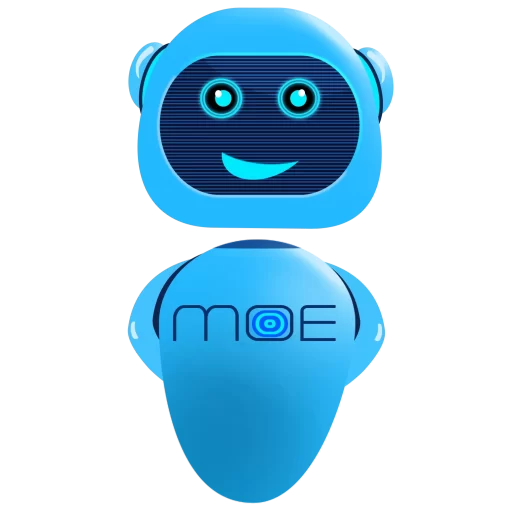Welcome to our blog post that delves into the fascinating world of AI chatbot writing! In this article, we will explore the advantages and challenges of utilizing AI chatbots for content creation while focusing on the ever-popular Python programming language. So, let’s dive in and unravel the potential of AI chatbot writing!
Advantages of AI Chatbot Writing
AI-powered chatbots have emerged as powerful tools for generating content efficiently and effectively. Let’s delve into some of the major advantages they bring:
Efficiency and scalability in content creation
One of the significant advantages of AI chatbot writing is its ability to generate vast amounts of content in a short time. Whether it’s creating articles, blog posts, or social media updates, AI chatbots can churn out content at an impressive speed. This efficiency is particularly beneficial for automating repetitive tasks or responding to frequently asked questions.
Imagine having a chatbot that can instantly provide relevant information to your customers, saving time and effort for both parties involved. AI chatbot writing allows businesses and organizations to streamline content creation processes, freeing up valuable resources for other crucial tasks.
Enhanced customer engagement and user experience
AI chatbots offer a seamless and personalized conversational experience. They can respond swiftly, offering prompt assistance to users in need. With their 24/7 availability, AI chatbot writers ensure continuous customer support, regardless of the time zones or business hours.
As businesses embrace AI chatbot writing, customers can connect with brands and receive immediate responses, enhancing their overall engagement. Furthermore, these chatbots can detect customer preferences based on past interactions, thus delivering tailored content, recommendations, or assistance.
Language proficiency and grammatical accuracy
One of the challenges in human-written content generation is the potential for errors, grammatical inconsistencies, or lack of language proficiency. However, AI chatbot writing addresses these concerns by employing powerful language models. These models ensure flawless writing, allowing chatbots to create content that is grammatically accurate and linguistically refined.
By leveraging AI chatbot writing, businesses can maintain high standards of content quality, building trust, and credibility among their audience. Chatbots become reliable writing assistants, minimizing human errors and inconsistencies often associated with manual content creation.
Challenges in AI Chatbot Writing
As with any technology, AI chatbot writing comes with its share of challenges. Let’s explore some of the major hurdles faced in this domain:
Maintaining conversational flow and context understanding
While AI chatbot writers have made significant progress, understanding the intent and nuances of conversations remains a challenge. They must overcome limitations in comprehending context, making it crucial to avoid misinterpretations in order to provide appropriate responses.
Developing chatbots that can seamlessly maintain conversational flow requires continual advancements in natural language processing. Ongoing research and innovation will be vital to ensure AI chatbot writing becomes even more adept at capturing the subtleties of human communication.
Navigating complex and unstructured queries
Humans often present chatbots with ambiguous queries or conversational threads that are complex and unstructured. To address this, AI chatbot writers need to handle these ambiguous questions with finesse and extract relevant information effectively.
Modifying algorithms and models to comprehend non-linear conversations becomes essential for improving the accuracy and reliability of these chatbots. Researchers and developers continue to refine AI chatbot writing capabilities to handle diverse queries with precision and ease.
Ensuring ethical and responsible use of AI chatbot writing
Alongside technical challenges, there is a critical need to address ethical considerations in AI chatbot writing. Data privacy and security should be paramount when dealing with personal information in conversations. It is crucial to implement safeguards against potential biases and malicious usage of AI chatbot writing technology.
Responsible implementation and adherence to ethics guidelines are fundamental to ensure that AI chatbot writing serves society by enhancing customer experiences, without violating privacy rights or perpetuating discrimination.
Developing a Chatbot in Python for AI Writing
If you’re interested in building a chatbot for AI writing, Python is an excellent language to dive into. Here’s why:
Image Alt Tag:Generate Amazing Content with AI Power
Overview of Python’s suitability for chatbot development
Python offers an array of libraries and frameworks specifically designed for natural language processing. With tools like NLTK, SpaCy, and TensorFlow, Python provides a robust ecosystem conducive to building AI chatbot writers.
In addition to its extensive libraries, Python’s simplicity and readability make it a popular choice for AI chatbot writing. The language’s clean syntax and vast community support ensure efficient coding and easy troubleshooting along the way.
Step-by-step guide to building an AI chatbot in Python
If you’re new to chatbot development, don’t worry! We’ve got you covered. Here’s a simplified guide to help you get started with building an AI chatbot in Python:
- Define intents and train utterances: Begin by defining the purpose of your chatbot. What kind of queries or tasks should it handle? Train the chatbot with relevant utterances to understand user intents effectively.
- Utilize pre-trained language models or create custom models: Depending on your specific requirements, consider utilizing pre-trained language models like GPT or BERT. Alternatively, you can train your own models using datasets tailored to your chatbot’s domain.
- Integrate the chatbot with a user interface: Allow users to interact with the chatbot by integrating it with a user interface. This interface can be a website, a mobile app, or any other platform that suits your needs.
By following these steps, you can embark on your journey to create an AI chatbot writer in Python and explore the endless possibilities for content creation.
Future Implications and Potential Applications
The future implications of AI chatbot writing are vast, with potential applications extending beyond content creation. Some areas where AI-driven chatbots can make a significant impact include:
Content creation industries
AI chatbot writing has the potential to revolutionize content creation industries. From generating news articles to producing marketing copies, chatbot writers can offer immediate and tailored content, catering to diverse audience requirements.
Customer support and service
As AI chatbot writing technology advances, businesses can enhance their customer support and service operations. Chatbots can provide instant assistance, resolving common queries, or escalating complex issues to human agents as required. This improves response times and overall customer satisfaction.
Ethical considerations and responsible implementation
As AI chatbot writing gains prominence, it becomes crucial to address ethical considerations. Transparency in data usage, safeguarding user privacy, and ensuring fair and unbiased interactions should guide the development and deployment of AI chatbots.
AI Chatbot Writing – Powerful Tool
AIchatbot writing is a powerful tool that offers unique advantages for content creation and customer engagement. While challenges exist, continuous research and innovation are driving the field forward.
By leveraging Python’s capabilities and following the steps outlined, you can embark on your journey to develop an AI chatbot writer. Remember, responsible and ethical use of AI chatbot writing is essential to ensure maximum benefits and avoid potential pitfalls.
Are you ready to unlock the power of Moe chatbot writing? Join us on this exciting journey as we witness the transformation of content creation through the marvels of artificial intelligence.

